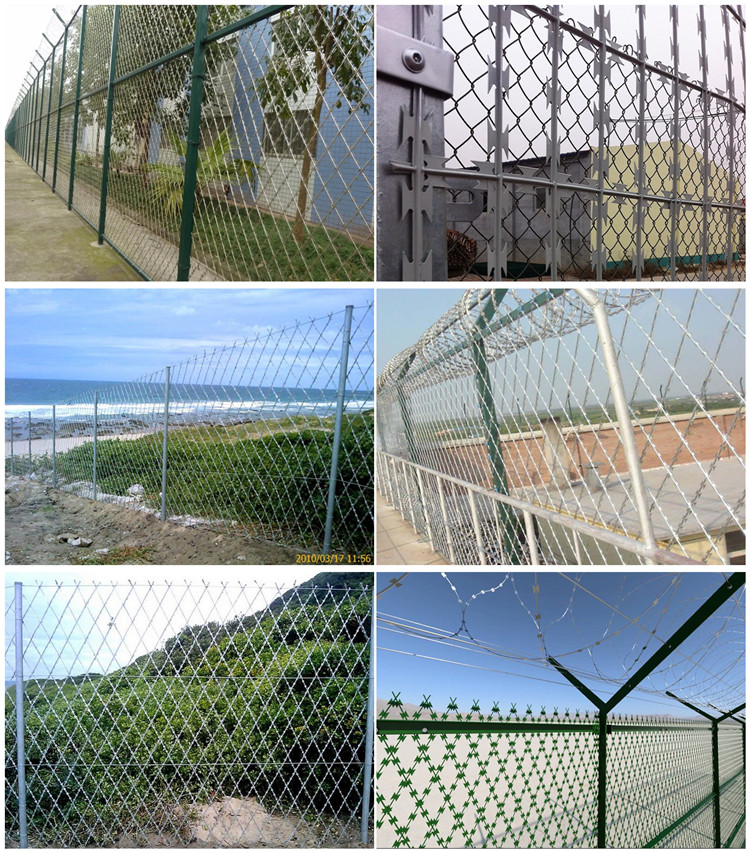Avg . 19, 2024 18:14 Back to list
Understanding CE Certification for Expanded Mesh Products and Their Applications
Understanding CE Certification for Expanded Mesh An In-depth Overview
Expanded mesh, often used in various construction and architectural applications, has gained significant traction due to its versatility and durability. However, to ensure products meet specific safety and quality standards, CE certification plays a crucial role. This article delves into the significance of CE certification for expanded mesh, outlining its benefits and the process involved.
What is CE Certification?
CE marking is a certification mark that indicates conformity with health, safety, and environmental protection standards for products sold within the European Economic Area (EEA). By affixing the CE mark, manufacturers assert that their products meet the necessary EU directives and regulations. This certification is essential for products such as expanded mesh, which may be used in construction, safety barriers, guards, and a myriad of other applications.
Importance of CE Certification for Expanded Mesh
1. Safety Assurance The primary purpose of CE certification is to ensure that products are safe for use. Expanded mesh products, which can be utilized in various critical settings like building facades, flooring systems, and grating, must undergo rigorous testing to confirm their structural integrity and safety under load.
2. Market Access For manufacturers, CE certification opens doors to the European market. Without this marking, products cannot be legally sold within the EEA. This regulation not only provides manufacturers with a competitive edge but also expands their market reach significantly.
3. Quality Guarantee CE certification serves as a testament to the quality of the expanded mesh. Consumers and businesses often seek out CE-marked products, as they are assured of compliance with established standards, thereby fostering confidence in their purchases.
4. Legal Compliance CE certification helps manufacturers avoid potential legal issues. Non-compliance with CE requirements can lead to substantial penalties, withdrawal of products from markets, and damage to business reputations. Hence, obtaining this certification is also a means of mitigating legal risks.
ce certification expanded mesh

The CE Certification Process for Expanded Mesh
The process to obtain CE marking for expanded mesh involves several steps that ensure compliance with the relevant directives, such as the Construction Products Regulation (CPR).
1. Identify Applicable Directives Manufacturers must first determine which EU directives apply to their expanded mesh products. For construction applications, the CPR is typically the principal regulation.
2. Product Testing Following the identification of applicable directives, products undergo necessary testing. This can include mechanical testing, corrosion resistance, and other performance evaluations, depending on the intended application of the mesh.
3. Technical Documentation Manufacturers must compile extensive documentation that demonstrates compliance with the standards. This document should include test reports, risk assessments, and specifications relevant to the product.
4. Declaration of Performance (DoP) A crucial part of the process is the creation of a Declaration of Performance, which must be made available to end-users. This declaration states the performance characteristics of the expanded mesh and confirms compliance with applicable regulations.
5. Affixing the CE Mark Once compliance is confirmed and documentation is ready, manufacturers can affix the CE mark to their products. This mark should be placed on the product or packaging in a visible location.
Conclusion
CE certification is an indispensable aspect of manufacturing expanded mesh, ensuring that products are safe, high-quality, and legally compliant for the European market. As demand for expanded mesh continues to grow, particularly in construction and architectural sectors, understanding and adhering to the CE certification process will be crucial for manufacturers aiming to establish a strong presence in the competitive landscape. By prioritizing safety and quality through CE certification, manufacturers can demonstrate their commitment to providing reliable products and contribute to safer environments for all.
-
358 Anti Climb Welded Wire Mesh Fence - Secure Perimeter Defense
NewsAug.02,2025
-
Durable Hot-Dip Galvanized Farm Field Wire Fence | Farm Security
NewsAug.01,2025
-
Temporary Fencing Solutions-Anping County Xingzhi Metal Wiremesh Products Co.,Ltd
NewsJul.31,2025
-
Hop Dipped Galvanized / PVC Coated Temporary Fence - Anping County Xingzhi Metal Wiremesh Products Co., Ltd.|Durable Temporary Fencing&Cost-Effective Security Solutions
NewsJul.31,2025
-
Hop Dipped Galvanized / PVC Coated Temporary Fence-Anping County Xingzhi Metal Wiremesh Products Co., Ltd|durable temporary fencing&corrosion-resistant solutions
NewsJul.31,2025
-
Temporary Fencing Solutions - Anping County Xingzhi Metal | Galvanized PVC Coated Fences
NewsJul.31,2025



